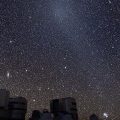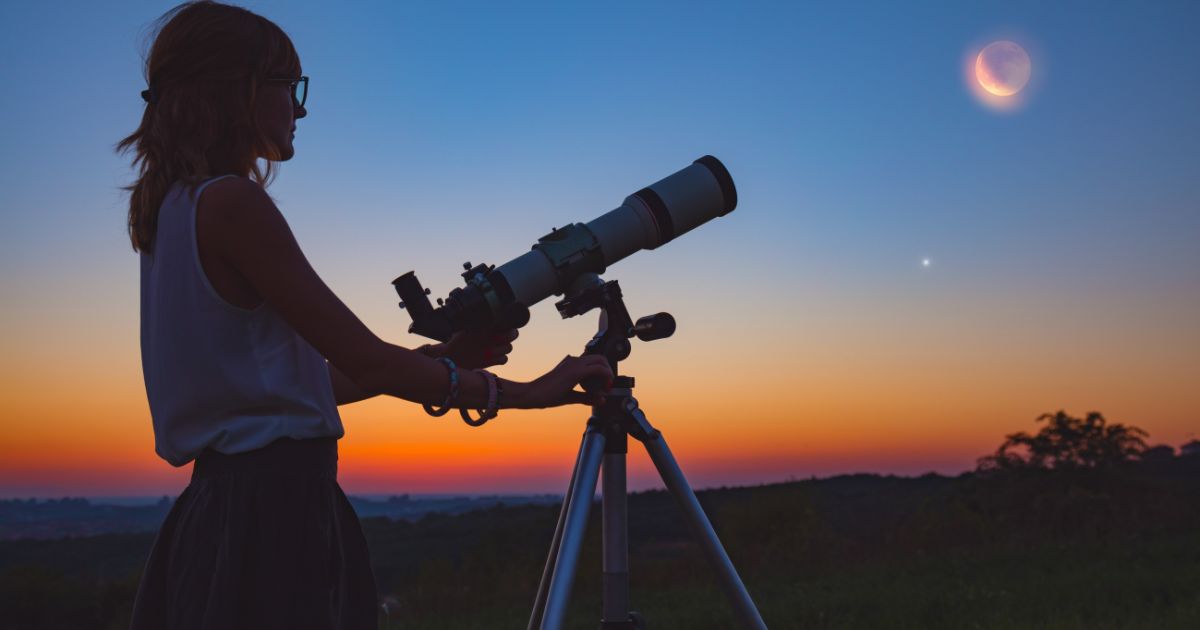The times in the “Notable Events” column have two formats for time. Those given as am and pm only need to be corrected Eastern Time to your time zone. The event times given in 24-hour format require correction for your Time Zone AND the Ottawa Correction Table.
The appearance and location of the stars and constellations are the same every year, but the locations of the solar system objects (planets and the Moon) are different.
The year begins with Jupiter and Saturn in the west after sunset. Saturn sets at about 19:00 and Jupiter follows at about 20:30. The Moon is “new” so it won’t interfere with your dark sky observing.
The Quadrantid meteors stream out of a patch of sky west of the handle of the Big Dipper. It will be a cold but dark sky on the night of the shower providing a good opportunity to see over a hundred meteors per hour. However it is more likely you will see about half that. Still, seeing one meteor per minute is pretty good.
NOTEABLE EVENTS
1 Moon at Perigee 17:55 pm
2 New Moon
3 Quadrantid Meteor Shower
4 Earth at Periheion 13:55 (147.1-million km)
7 Mercury Max. Elongation in Evening Sky
9 1st Qtr. Moon
14 Moon at Apogee 16:26
17 Full Moon
19 Sun enters Capricornus, 20:50
25 Last Qtr. Moon
28 Hyades Star cluster on meridian at 8 pm
30 Moon at Perigee 02:11

Main Meteor Showers
Meteor showers are best observed after midnight when our hemisphere is ploughing into the meteor stream. Although the duration of the most active portion of the shower is short, some shower meteors can be seen many days on either side of maximum.
The Quadrantids radiate from an area 20-degrees east of the Big Dipper’s handle. The short duration for the shower is somewhat balanced by the possible bright “fire balls” that are produced. And, the just-after full Moon on January 3/4 that will reduce the visibility of the fainter meteors and makes this an unfavourable year for the shower.

Dates for the Phases of the Moon

Planetary Configurations
When at Opposition, planets will appear on the opposite side of the sky from the Sun – very roughly on the meridian at midnight.
Conjunctions are when the planet has the same “longitude” as the Sun. A Superior Conjunction is when the planet is on the other side of the Sun, and an Inferior Conjunction is when it is between the Earth and the Sun. Only Mercury and Venus can be at Inferior Conjunction. Maximum elongation is when Mercury and Venus appear farthest from the Sun in our sky. This occurs either in our morning eastern sky (mor.) or our western evening sky (eve.).
Do not apply the Ottawa-correction times to the times in this table.

* Not possible for this planet
Prominent Constellations by Seasons


Brightest Stars


One of Canada’s foremost writers and educators on astronomical topics, the Almanac has benefited from Robert’s expertise since its inception. Robert is passionate about reducing light pollution and promoting science literacy. He has been an astronomy instructor for our astronauts and he ensures that our section on sunrise and sunset, stargazing, and celestial events is so detailed and extensive it is almost like its own almanac.













